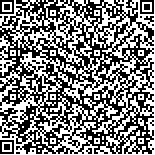| 摘要: |
| 通过国际经合组织(OECD)藻类生长抑制试验的国际标准方 法,参照生活饮用水卫生标准(GB5749-85)设置毒物浓度进行试验,得到了2,4-二硝基苯胺、2,4-二硝基氯苯、间二硝基苯对盐藻 (Dunaliella salina)的48h半数有效抑制浓度EC50值,2,4-二硝基苯胺的为0.018mmol/L,2,4-二硝基氯苯的为0.015mmol/L,间 二硝基苯为0.027mol/L。其毒性大小为2,4-二硝基氯苯>2,4-二硝基苯胺>间二硝基苯。并探讨了其致变的原因。 |
| 关键词: 盐藻(Dunaliella salina) 毒性 硝基芳烃 |
| DOI: |
| 分类号: |
| 基金项目:广东省自然科学基金资助项目(990874) |
|
| Test of toxicity of nitryl-aromatic hydrocarbon to Dunaliella salina |
|
|
| Abstract: |
| The algal growth test is the main method for the study of hydrophytic ecological toxicity. By using the standard method for algal grow inhibition test made by Organization for Economic Cooperation and Development(OECD), for algal the toxicity(48h, EC50) of hydroxybenzenes to Dunaliella salina was determined. In the test, the setting of consistencies was referring to Sanitary Standard for Drinking Water(GB5749-85). 2,4-Dinitroaniline’s EC50 was 0.018mmol/L, 2,4-Dinitrochloro benzene’s was 0.015mmol/L, m-Dinitrobonzene’s was 0.027mmol/L. The toxicity ranked in a decreasing order was 2, 4-Dinitrochloro benzene ’s>2, 4-Dinitroaniline’s > m-Dinitrobonzene’s. In this article we can know the cause of causing toxicity. At the same time we can observe Dunaliella salina’s cells’ changes when we use optic microscope to observe them, so we know that hydroxybenzenes can damnify the cells. |
| Key words: Dunaliella salina toxicitiy nitryl-aromatic hydrocarbon |
